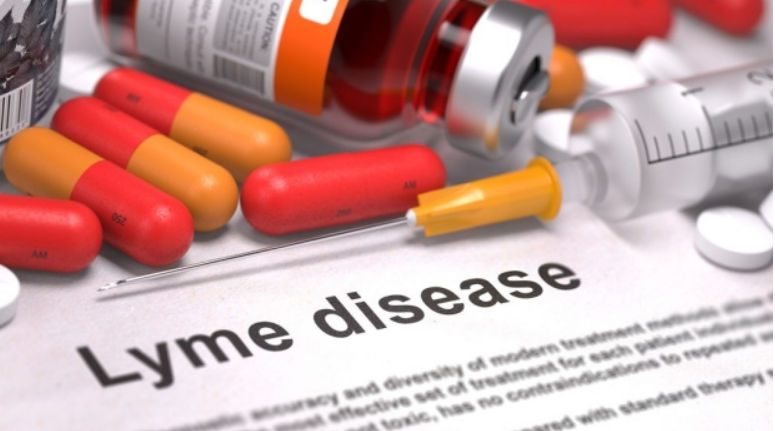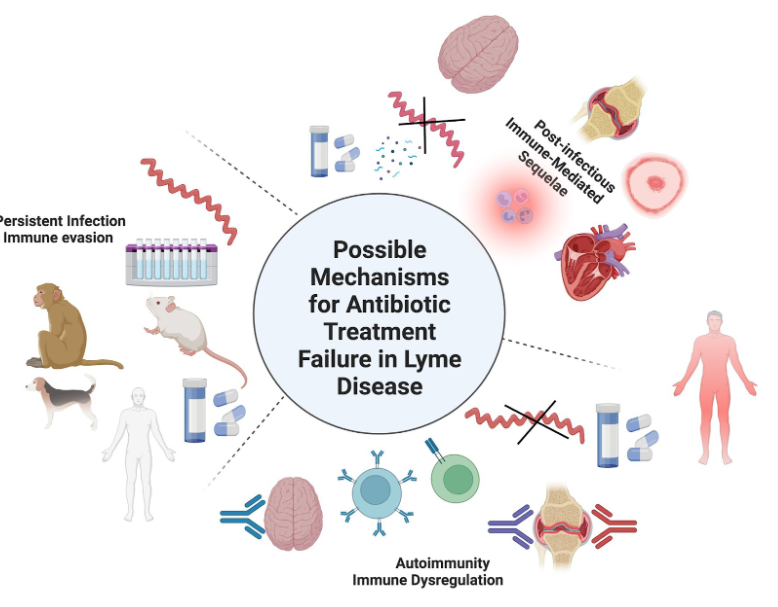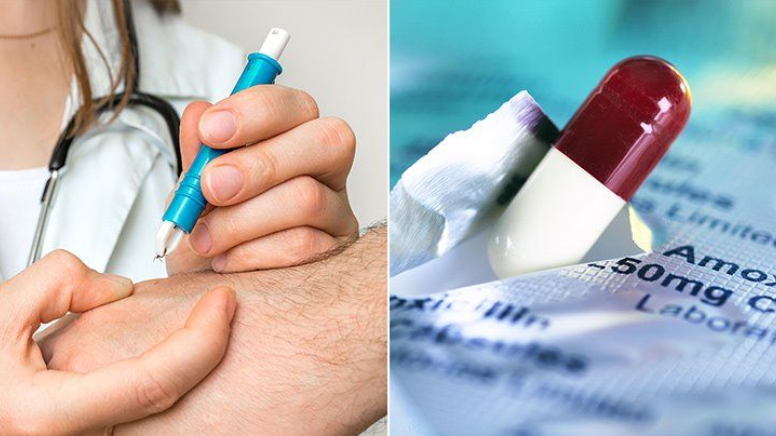Antibiotic Therapy for
Lyme Disease
Expectations and Outcomes


Early antibiotic therapy is the most effective treatment in patients with Lyme disease. Understanding the antibiotics being prescribed, the recommended treatment schedules, and the possible side effects will be helpful for recovery, thus offering the least possibilities for complications associated with the disease. Here let’s understand the Lyme Disease Treatment Options to effectively manage Lyme disease.
What antibiotics are used to treat Lyme disease?
Antibiotics used in the treatment of Lyme disease are . All these drugs work well against the Borrelia bacteria and diminish symptoms while avoiding complications. Antibiotic choice is based on disease stage and other patient-specific considerations.
For severe cases, intravenous antibiotics such as ceftriaxone are used to treat serious neurological or cardiac symptoms. The choice of antibiotic is based on the age of the patient, the severity of the disease, and medical history.
These antibiotics work by killing the Borrelia bacteria, thereby preventing infection from advancing. Early intervention with the appropriate antibiotic markedly enhances the outcome.
How long does antibiotic treatment for Lyme disease last?
Antibiotic treatment for Lyme disease usually lasts for 10–21 days in early-stage infections. For late-stage Lyme or severe complications, the duration may be longer, usually 2–4 weeks, depending on the patient’s condition and symptoms.
The treatment extends up to a few weeks in late-stage or disseminated cases involving joints, heart, or nervous system. In severe cases like neuroborreliosis, intravenous antibiotics are required and may continue for a longer time. Completing the course of antibiotics is imperative to eradicate the infection and prevent recurrence or complications.

What side effects can occur during Lyme antibiotic therapy?
Lyme antibiotic therapy can cause side effects such as nausea, diarrhea, and yeast infections. In rare cases, severe reactions such as allergic reactions, including rashes or breathing difficulties, can also occur and require immediate medical attention.
Rarely, an extended use of antibiotics results in Clostridioides difficile (C. difficile) infection, leading to severe diarrhea. Side effects can be lessened if a patient takes his or her prescription as indicated and informs the physician of any medical conditions or medication allergies that might exist. Taking probiotics will help rebalance the bacteria during treatment.
When do symptoms improve with antibiotic therapy?
Symptoms of Lyme disease often improve within a few days to weeks of starting antibiotics like doxycycline. Fatigue, fever, and joint pain may gradually subside over several weeks.
The recovery depends on the stage and severity of the disease, but most early cases resolve quickly with treatment. More severe infections, such as late-stage Lyme disease, may require longer recovery periods even after completion of the course of antibiotics.
In some patients, symptoms may persist and be termed Post-Treatment Lyme Disease Syndrome. Management in such cases would be required. The earlier the antibiotic treatment is initiated, the more likely it is that the symptoms will resolve faster and complications will be avoided.
Can Lyme disease return after antibiotic treatment?
Lyme disease can recur if not fully treated or reinfection occurs. Persistent symptoms, known as Post-Treatment Lyme Disease Syndrome (PTLDS), may arise but are not caused by active infection.
Reinfection with the pathogen, however, occurs from new tick bites in endemic areas. Post-Treatment Lyme Disease Syndrome or PTLDS is reported among some patients by lingering symptoms including fatigue or pain in the joint.
This is believed to be caused by a change in the immune system and not by active infection. When the symptoms continue or worsen, doctors check for other causes or reinfection. Preventive measures such as repellents for ticks and protective clothing are important in reducing the chances of reinfection.

What happens if Lyme disease is left untreated?
If Lyme disease is left untreated it can progress to the late stage with complications of arthritis, neurological disorders, and heart issues. Thus, it is a strong argument that early treatment through antibiotics would avoid such critical results.
Neurological disorders, such as meningitis, memory loss, or facial palsy, may also occur. In some cases, if left untreated, infections can lead to Lyme carditis, which causes irregular heart rhythms or other cardiac problems.
It is through the early administration of effective Lyme disease antibiotics that these complications are prevented. Early recognition of symptoms and subsequent treatment is therefore critical in preventing long-term health issues.
How effective are antibiotics for late-stage Lyme disease?
Antibiotics are effective for late-stage Lyme disease but may take more time to fully recover. Sometimes, intravenous antibiotics are needed to treat a severe case where complications like neurological or joint damage have occurred.
For Lyme arthritis, oral or IV antibiotics can help reduce joint inflammation, but recovery can take months. Although antibiotics effectively clear Borrelia bacteria, damage from the prolonged infection may include nerve or joint impairment that requires additional therapy, such as physical rehabilitation. Early detection and treatment greatly improve outcomes, making early medical attention of utmost importance.
What should you avoid during antibiotic therapy for Lyme disease?
During antibiotic therapy for Lyme disease, avoid consuming alcohol, which can interfere with medication, and limit sun exposure to prevent skin sensitivity.
Doxycycline is an example of antibiotics that increase the sensitivity to sunlight, so sun and protective clothing should be used. Some antibiotics have dietary restrictions on forms of calcium-rich foods to enhance their absorption.
Always follow dietary restrictions, and consult your doctor about any medications or supplements you take to avoid potential interactions. By following such precautions, optimization of treatment and easy recovery can be expected.
The Key Takeaway
If you’re wondering how to treat Lyme disease, antibiotic therapy remains the primary and most effective approach. From early symptom relief to controlling late-stage complications, these therapies prevent long-term damage. Involving prompt intervention with the awareness of side effects will produce better results in patients with Lyme disease.
